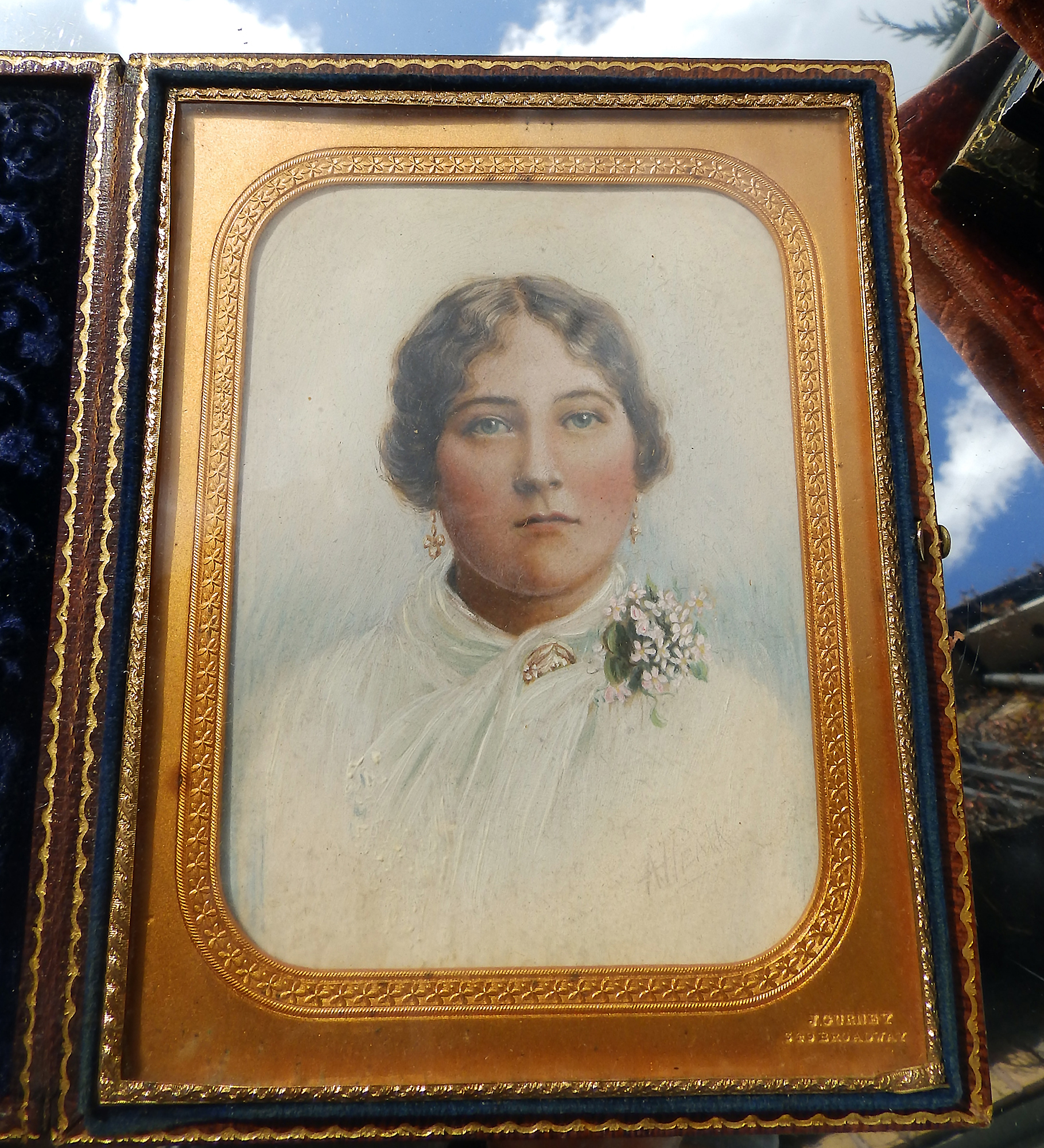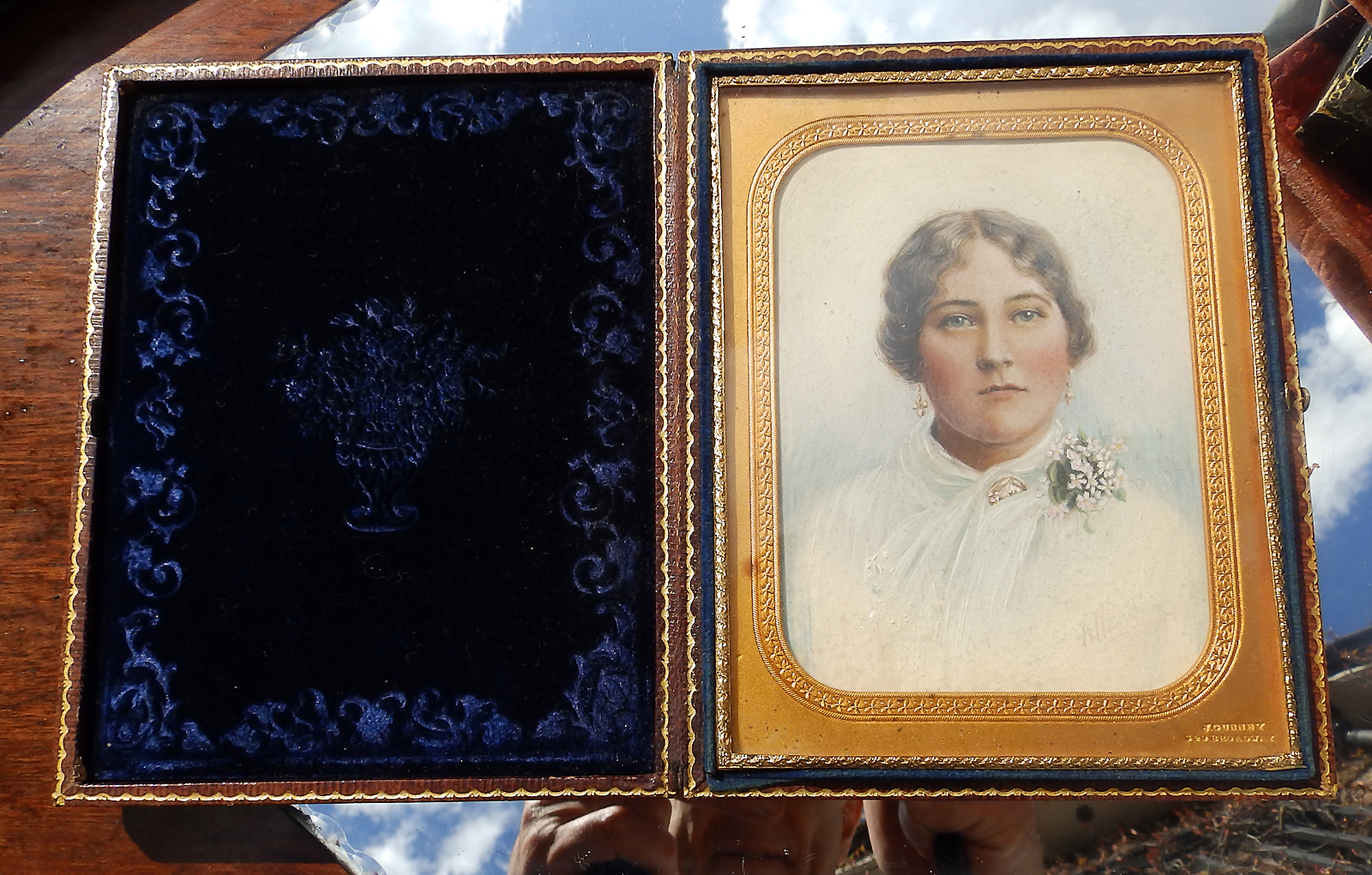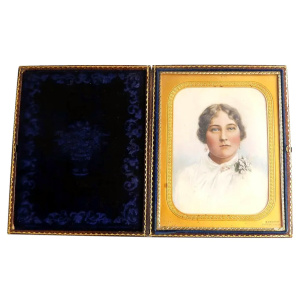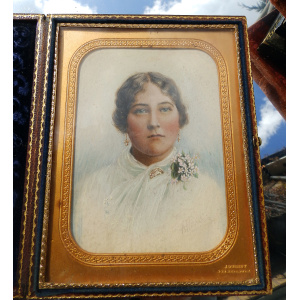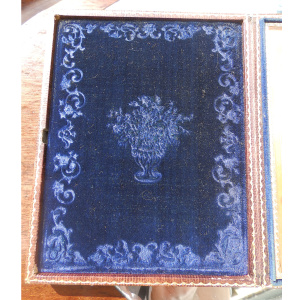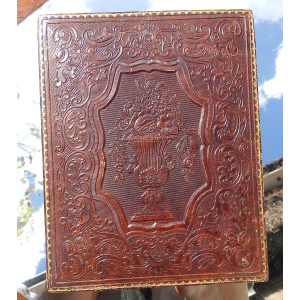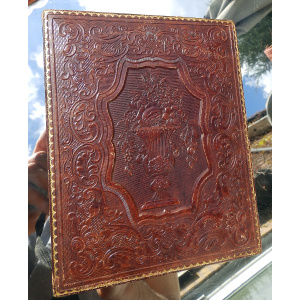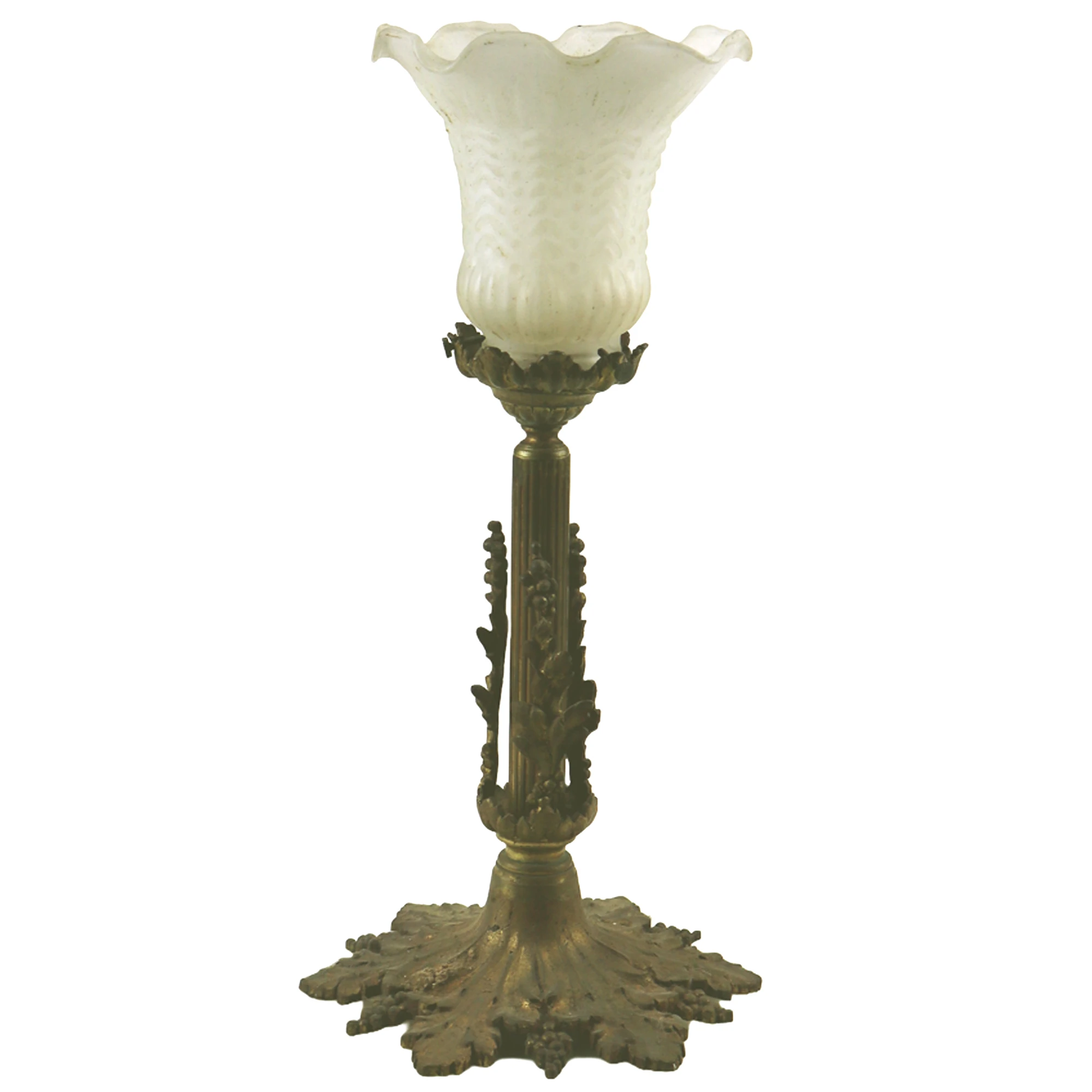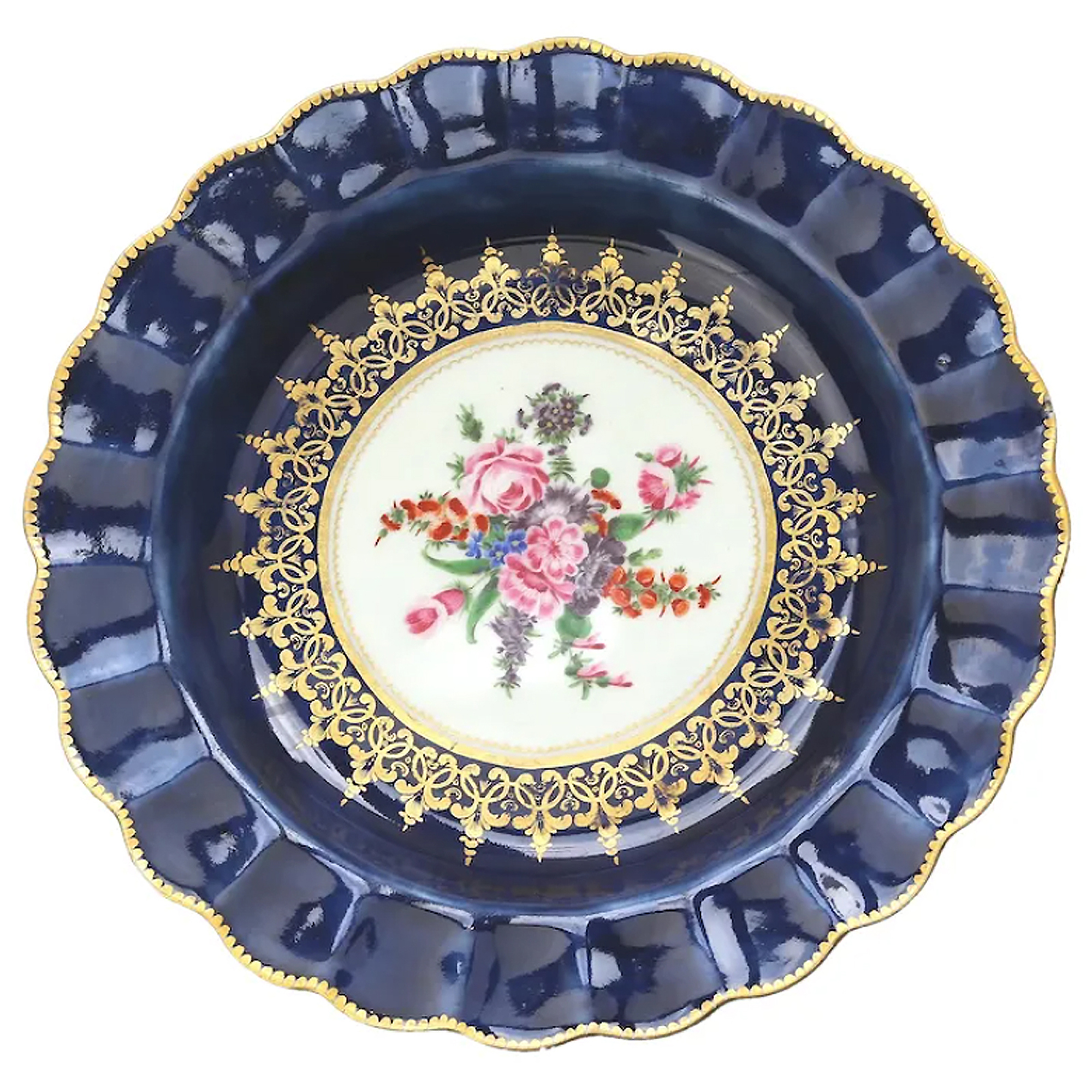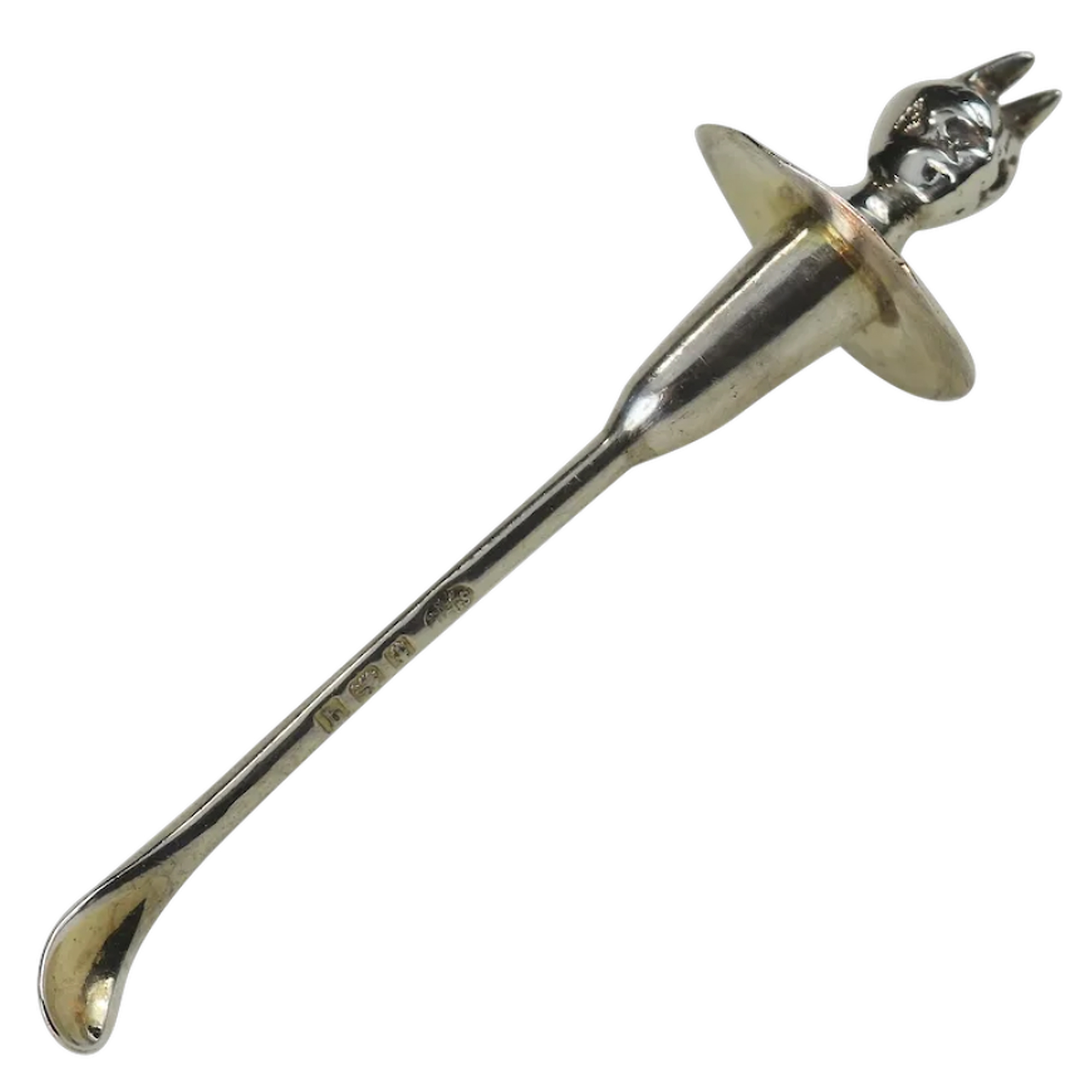Follow Hunt Vintage
A Good Portrait Miniature signed A Heath in folding Jeremiah Gurney Case C.19thC
Delivering from: London, United Kingdom (UK)
£325
- Tree planted with your order
- Secure Payment
- Excellent customer service
- Buyer Protection
- 14-day return guarantee
A good miniature portrait on card of a lady in a leather embossed folding case signed by A Heath the gilt border impressed J Gurney 349 Broadway. probably an ivorytype?
Circa: 19thC
Good Antique Condition – light wear commensurate with age with no damage or repairs, a particularly fine example and should not be missed.- camera reflections in images
Buyers are expected to have more knowledge than us on this item. Could this be an ivorytype? Please note when I took the image out of the frame it appeared to be on cardboard. If I have understood what I have added below the image was like an opaltype (I had a number of opaltypes before (ex-Harker collection), these were on glass. Not our usual genre please satisfy yourself before buying or ask questions which we are happy to answer.
6.25 inches (16cm) height X 5 inches (12.9cm) width X 0.75 inches (2 cm) depth approx
Safe UK shipping is included in the price. International shipping at cost
Jeremiah Gurney (October 17, 1812 – April 21, 1895), was an American daguerreotype photographer operating in New York. Gurney worked in the jewelry trade in Little Falls, New York, but soon moved his business to New York City and shortly after turned to photography, having been instructed and inspired by Samuel Morse. He was one of the pioneering practitioners of the daguerreotype process, opening the first American photo gallery at 189 Broadway in 1840, and charging $5 for a portrait. He created remarkably detailed portraits, using to the full the remarkable tonal rendition of the process. He selected his clients from New York’s society elite, calling them “Distinguished Persons of the Age” and eschewing the political and entertainment figures favoured by his rival, Mathew Brady. The quality of Gurney’s portraits soon ensconced him as the finest daguerreotypist in Gotham.[1] Gurney’s photographic skills received numerous accolades, including a write-up in the Scientific American of 5 December 1846. The New York Illustrated News, in an 1853 article, wrote that his establishment at 349 Broadway” consisted of nine spacious rooms, devoted exclusively to this art.” In the 1840s Gurney showed his images at numerous exhibitions such as the American Institute Fair and later at the Crystal Palace in London, achieving international renown. His business flourished and in 1858 he built a three-story white marble studio at 707 Broadway to house his pictures, and it was the first building built for the sole purpose of photography in the United States. Gurney played a leading role in the training of the first wave of pioneering photographers such as Mathew Brady, who made a name for himself as a civil war photographer. Brady had been employed as a journeyman making jewelry cases for E. Anthony & Co., and also made display cases for Gurney’s daguerreotypes. One of the things Gurney is best known for is having taken the only known photograph of Abraham Lincoln in death.
The American Ivorytype is an artistically manipulated photographic process that was specifically designed and used for portraits during the middle of the nineteenth century. The intent of the Ivorytype was to portray a glowing, three dimensional, life-like presence to the image of the sitter, comparable to, and imitating, the feeling of a painted ivory miniature and/or oil painting. The ivory miniature achieved this modeling effect as a result of its paper-thin ivory support which allowed light to pass through it. The light that entered was reflected back through the highlights of the image by a white backing card. A well composed photographic portrait that was artistically handpainted with watercolors and rendered translucent by the impregnation of wax also produced this quality, but could be fabricated in a fraction of the time.
Even though the making of the Ivorytype was less time-consuming than the ivory miniature painting, it was still a laborious process, requiring many procedures. To make this historical process, it required photographers to undertake the following steps: First, a portrait was taken of a sitter. Second, two salted paper photographs of the image were printed (although there are examples of Ivorytypes, equally as beautiful, that used only one). Third, both photographs were cut to the same dimensions so that alignment occurred when one was placed on top of the other. Fourth, both prints were hand-painted with watercolors. The top print was painted with intensely vivid colors in a controlled manner, with meticulous attention paid to the details of fabric patterns, facial features and in the textures of any background objects, (if the photographer/artist was talented, this photograph quite convincingly passed as a painting). The bottom photograph was broadly painted in the general areas of the image (dress, cheeks, background, etc.) using less saturated colors. Any modeling or dimensional illusion could be brought out by the painting techniques used on this photograph. Fifth, when the top photograph was dry, it was sealed to a sheet of plate glass with a mixture of white beeswax and gum dammar (or some other resin). As a result of waxing the top photograph, the watercolors became muted to normal intensity, and the image more vibrant through its transparent quality. The final step was to seal the top print, now attached to glass, together with the bottom print and a protective backing board. Sometimes spacers were introduced between the photographs which gave a greater three dimensional illusion to the image. This was accomplished using a paper tape or metal band.
There are many variations of the Ivorytype; each with its own name and technique, and all equally capable of producing a beautiful, realistic portrait. Some of these variant processes were introduced to the public before the Ivorytype, yet most are referred to in this day, and even in their own era, as an Ivorytype. These processes so closely resemble the Ivorytype in procedure and visual appearance that it is easy to understand why this mis-identification occurs. For example, in the Hallotype Process, patented by J. B. Hall in England in 1855 and in America in 1857, the top photograph was sealed to the glass using just dammar varnish instead of a wax/dammar mixture. The distinction of the Sennotype Process, introduced in 1864, is that its top photograph was coated with only pure beeswax, and it was not sealed to the cover glass.
Besides varying waxing techniques, other photographers experimented with creating an imitation ivory support material that gave the same translucent effect to the image as that of the ivory support in painted miniatures. In these variations the emulsion was coated directly onto the imitation ivory. The most famous process of this style was popularly used during the same era in England, and bears the same name, the Ivorytype. This process was invented, and patented in 1855, by John Edwin Mayall, and the support material consisted of barium sulfate and albumen. (Its famous imitator is the Eburneum Process.) Another process whose support clearly has the translucent quality of ivory is the Opalotype, a hand colored photographic image on white or flashed glass.5 Ivorytypes and the other variants ranged in size from whole plate (6 1/2″ × 8 1/2″), the most common size, up to approximately 16 × 20 inches.
| City | |
|---|---|
| Item Location | |
| Period | |
| Style | |
| Delivery |
Shipping Policy
We ship most things within 24 hours, packaging everything safely. We use tracked and signed for services. Expensive items are shipped using FedEx/UPS/similar.
For any enquiries or quotes please contact us using the 'Ask Seller' from below.

